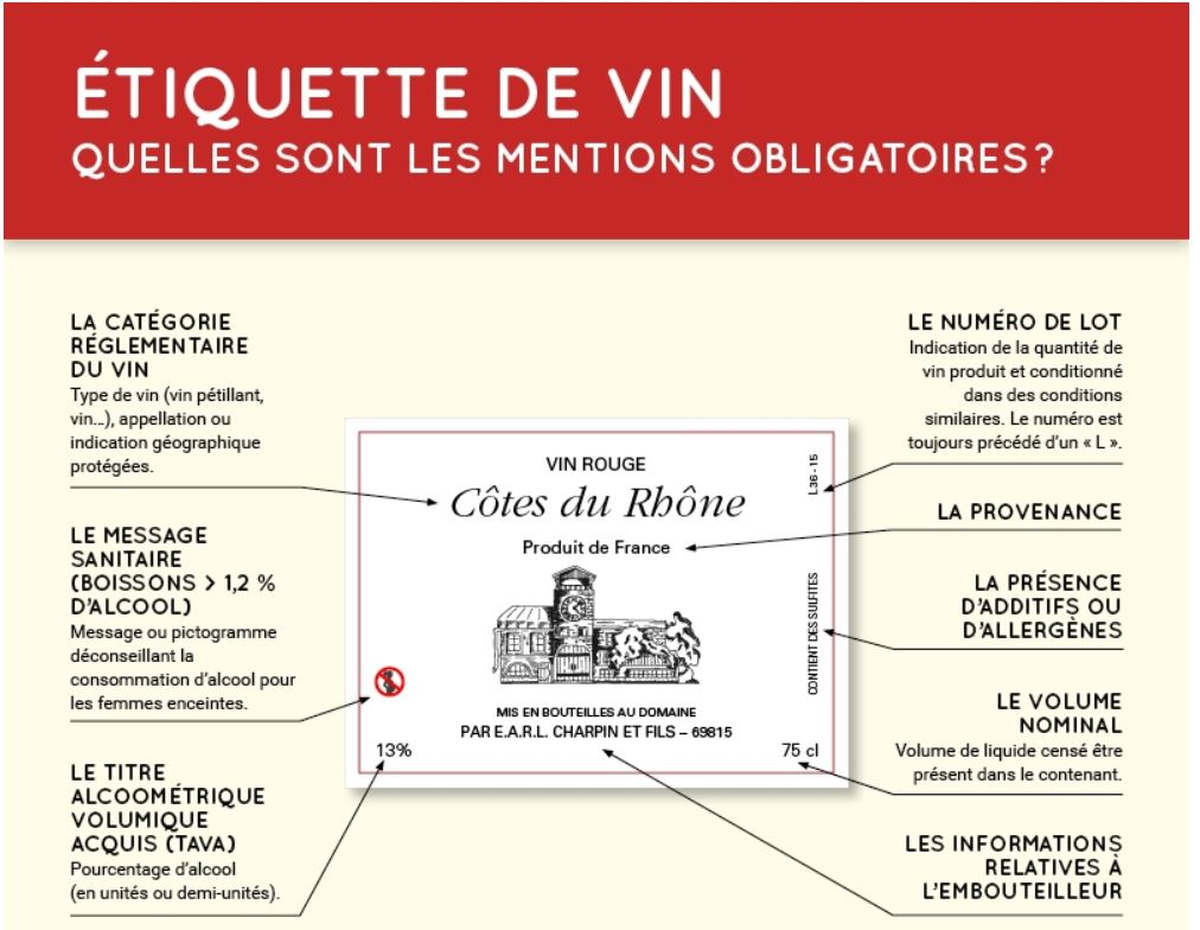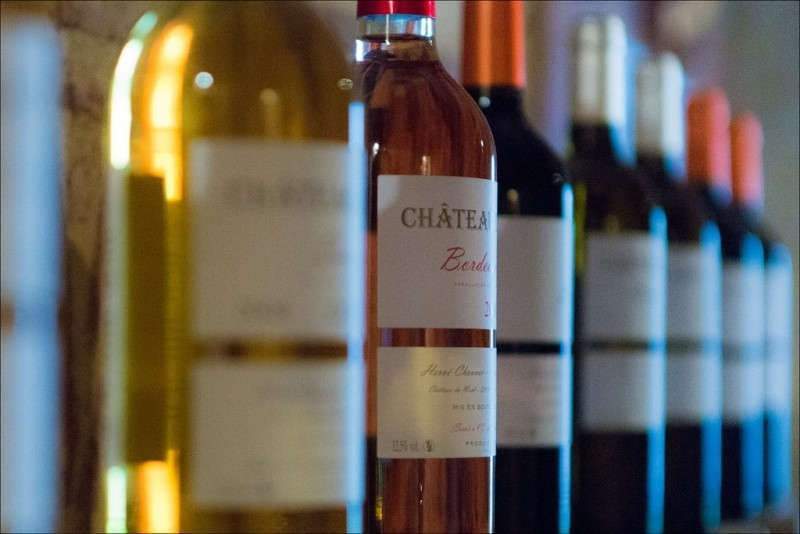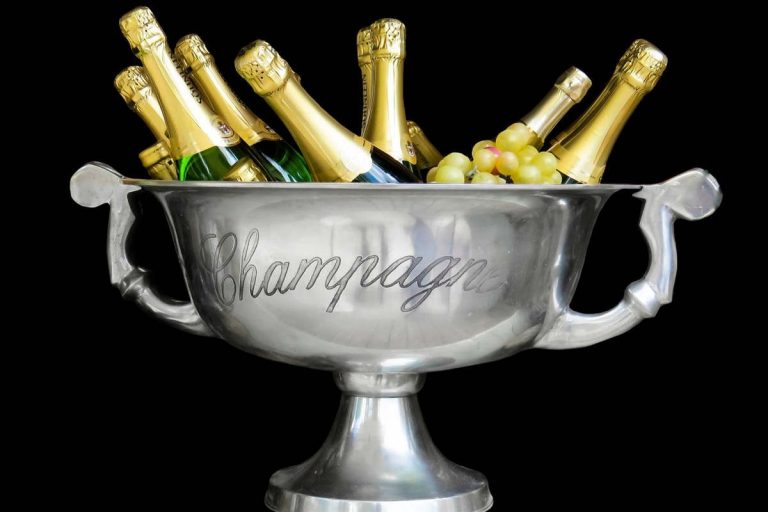Wines (including Champagne) are subject to very strict regulations to ensure product traceability. The labels are a valuable source of information for the consumer. Decryption with Bercy Infos.
What are the different categories of wine?
There are 2 categories of wine: wines without geographical indication (VSIG) which correspond to the old table wines and wines with geographical indication (GI). The indications on the bottles therefore vary from one category to the other.
Wines without geographical indication
Some wines do not have any protected designation of origin (PDO) or protected geographical indication (PGI) on their label. However, they belong to a specific category formerly called “table wine” and now called “wine without geographical indication (VSIG)”. This category is obliged to indicate on the label the country of origin where the grapes were collected and processed, as well as the category of vine product to which these wines belong (wine, sparkling wine, etc.).
Thus, the wines without geographical indication and produced in France, have taken the habit of making appear the mention “wine of France”.
To know more
Since 2009, wines without geographical indication have been authorized to show the grape variety and the vintage on their label, subject to specific approval by the operator and certification of the wines by FranceAgriMer.
Wines with a geographical indication or a controlled appellation
This category corresponds to wines whose grapes are harvested and vinified within a defined geographical area, respecting the conditions of production established in the specifications. There are two sub-categories:
- The Protected Designation of Origin (PDO): the PDO designation on a label means that the wine is linked to a specific terroir and know-how. In order to use this European acronym, the wine must first obtain the French equivalent of this mention, the appellation d’origine contrôlée (AOC) from the INAO. Only once the PDO has been acquired can the product be registered in the European register of protected names (placed under the authority of the European Commission) and enjoy protection throughout the European Union.
- The Protected Geographical Indication (PGI): The PGI is also based on the relationship of the product to a given territory and meets the same registration requirements at the national and European levels. However, the conditions of production are less restrictive (no parcel delimitation as in the PDO, wider choice of grape varieties, etc.).
What are the compulsory indications on the wine bottles?

In order for a wine to comply with the regulations, it must show the following information on its label:
The sales name
–For a wine with a geographical indication: “protected designation of origin” or “protected geographical indication” + protected name. It should be noted that European regulations allow operators to replace the terms “protected designation of origin” and “protected geographical indication” with “controlled designation of origin” and “local wine”.
–For a wine without geographical indication: mention of the category of vine product + country of origin. Example: wine from France, sparkling wine from Spain.
- The actual alcoholic strength by volume (ABV): this is the percentage of alcohol (in units or half-units). Example: 14% vol.
- The nominal volume: this is the volume of liquid supposed to be present in the container. The range of volumes imposed in France according to the category of wine is the following:

- The origin: the indication of the origin is done in the following forms: “wine from/of/to”, “produced in/to” or “product of/of/to”, or equivalent terms, completed by the name of the Member State when the grapes are harvested and transformed into wine on this territory.
-For French wines, European regulations allow the following terms: “Vin de France”, “Produit en France”, “Produit de France”.
-For wines with a PDO or PGI, the terms commonly used are “produced in France” or “product of France”.
-Wines without a geographical indication are labelled “vin de France”. - Information about the bottler: the bottler is defined as the natural or legal person, or the group of these persons, who carries out the bottling or has it carried out on his behalf. It follows from this definition that the bottler is not necessarily the one who physically bottles the wines but the one who is responsible for them.
- The presence of additives or allergens: the principle is that allergenic substances must be mentioned in the labeling of wines when they are detectable. Labeling is mandatory when sulfites are present in quantities greater than 10 mg/l.
- Indication of the sugar content for sparkling wines, aerated sparkling wines, quality sparkling wines and quality aromatic sparkling wines.
-Brut nature : sugar content < 3 g/l and no sugar added after the sparkling process
-Extra brut: sugar content between 0 and 6 g/l
-Brut: sugar content < 12 g/l
-Extra dry: sugar content between 12 and 17 g/l
-Dry: sugar content between 17 and 32 g/l
-Demi-sec: sugar content between 32 and 50 g/l
-Sweet: sugar content above 50 g/l - The batch number: it can be made up of numbers or letters and is preceded by the letter “L”, except in the case where this mention is clearly distinguished from the other labelling indications. This indelible lot number must be shown on the label or on the container in a visible and legible way. It must not be scratched or erased.
- The health message (beverages > 1.2% alcohol): this is the message or pictogram advising against the consumption of alcohol by pregnant women. It must be placed near the alcoholic strength by volume.
What are the optional statements?
There is additional information that can help you to ensure the conformity of a product. These mentions, without being compulsory, are nevertheless subject to regulation:
- the vintage: to be able to claim a vintage year, the producer must have harvested at least 85% of the grapes during the year indicated on the bottle
- the grape variety: in the same way as the vintage, a grape variety indicated on a bottle of wine indicates that in principle 85% of the grapes correspond to the variety indicated (100% of the grapes if at least two grape varieties are mentioned on the label)
- the production method: producers can decide to highlight certain production practices. For example, the bottle may indicate the type of container in which the wine was aged (“aged in oak barrels”), a particular vinification “bottle fermentation”, a particular vine culture and vinification “organic wine”… Note that to use this information, specific conditions must be met
- the farm: the mention of the farm is reserved for PDO and PGI. To be able to use it on a bottle, the wine must have been harvested and vinified exclusively on the farm. Example: “Château”, “Domaine”, “Clos”, “Mas”…
- the European Union logos “PDO” and “PGI
- the sugar content for still wines:
-Dry: sugar content does not exceed 4g/l
-Demi-sec: sugar content between 4 and 12 g/l
-Moelleux: sugar content between 12 and 45 g/l
-Sweet: sugar content exceeds 45 g/l.
What are the rules concerning Champagne?
The birth of Champagne dates back to the end of the 17th century. The main characteristic is that the process of fermentation of the grape must in the bottle allows the wine to sparkle. The quality of champagne is measured by the cru, the grape variety and the vintage. Explanations on these terms.
- Cru: the place where the vine grows. The place of production of champagne is strictly defined by the law of July 22, 1927: only 5 departments can produce champagne: Marne, Aube, Haute-Marne, Aisne and Seine-et-Marne.
- Grape variety: this is the variety of grapes from which the wine is made. Seven grape varieties are authorized by the regulations: Chardonnay, Pinot Noir, Pinot Meunier, Arbane, Petit Meslier, Pinot Blanc and Pinot Gris. 100% of the grapes must come from the grape variety indicated (which is more restrictive than the general regulations, which stipulate that at least 85% of the grapes must come from the grape variety indicated).
- Vintage: it corresponds to the year of harvest of the grapes.
Mandatory information to check
To verify that your bottle contains Champagne, remember to check the mandatory mentions:
- The appellation “Champagne”: it must appear on the bottle in two places: on the label and on the cork.
- Mentions : Brut nature, Extra-brut, Brut, Extra-dry, Dry, Demi-sec, Sweet. The name or company name of the producer: the name or company name of the producer, as well as the municipality of its head office must appear.
- The professional registration number: it is issued by the Comité interprofessionnel des vins de Champagne (CIVC).
This number must be preceded by the initials that give information on the professional category of the winemaker and must be visible on the product label. It is more precisely the following initials:
-C.M. for Cooperative of handling: the cooperative transforms the grapes of its members in its premises in order to produce champagne then markets it if necessary.
-R.C. for Récoltant coopérateur: the récoltant coopérateur harvests his grapes, entrusts them to his cooperative and then takes back wines in the process of being made or ready to be marketed in order to sell them himself.
-R.M. for Récoltant manipulant : He harvests his grapes, elaborates the wine in his premises and markets it.
-S.R. for Société de récoltants : it is the group of producers who elaborate champagne thanks to the grapes of the harvest of its members and markets it.
-N.M. for Négociant manipulant: the négociant manipulant buys grapes, musts or wines and takes care of their elaboration in its premises before marketing the champagne. The major champagne brands belong to this category.
-N.D. for Négociant distributeur : he buys wines in finished bottles on which he affixes, in his premises, a label.
-M.A. : the wine producer, whether he is a merchant, a harvester or a cooperative, sells finished bottles dressed with the brand name of the customer who buys the bottles. - The mentions of the capsule. Several obligations concern the capsule of a bottle of champagne:
–the CRD (rights representative capsule) is green and the word “champagne” must appear in all letters on it (champagne specificity). The codes used are “R” for the harvesters (RM, RC and CM), “N” for the traders (NM).
–The CRD can be personalized with the coordinates of the winemaker: the number appearing on it is then the number of the department of its head office (“02”, “10”, “51”, etc.). It can also be unmarked (only for the harvesters), the number appearing on these being then ” 51 “. - Other compulsory information. The following information must also appear on the label:
-the origin: “product of France” or equivalent terms
-the alcoholic strength (% vol)
–the nominal volume (in l, cl or ml)
–the batch number
–allergens
–the health message or the “pregnant woman” logo.
Good to know
- Champagne is the only AOC in France that is not subject to the obligation of labeling the words “appellation d’origine contrôlée”.
- Beyond these mandatory mentions, it is advisable to never buy a sparkling wine that is sold to you as “declassified champagne”, “hors quantum” or “jeunes vignes”. These names can hide frauds that should be reported to the :
- DREETS Grand – Est
- Pole C Brigade d’Enquêtes Vins et Spiritueux Zone Champagne / 6 rue G.A. HIRN 67085 Strasbourg Cedex / ge.poleC[@]dreets.gouv.fr / 03 88 14 32 08
What are the optional mentions ?
Optional mentions can also appear on the bottles of Champagne, such as
- the vintage
- the grape variety
- the words “Blanc de blancs” for a champagne made only from white grapes, or “Blanc de noirs” for a champagne made only from black grapes, or “Rosé”, for a champagne made by blending or bleeding.
How to keep Champagne ?
Once you have chosen your Champagne, you can keep it for several years, even if, unlike other types of wine, Champagne is delivered at maturity and is not meant to be kept for a long time.
To keep it, it is important to put the bottle horizontally, in a cool place (maximum 15 °c) and at a constant temperature, away from light, noise and vibrations.
Alcohol abuse is dangerous for your health, consume in moderation.
Learn more about wine labeling
- Wine labeling: how to read the labels – [DGCCRF]
- The control of wines and spirits: review of recent cases of fraud – [DGCCRF]
- Wines without geographical indication: the point on the regulation – [DGCCRF]
- Champagne: knowing the language of labels – [DGCCRF]
- Comité interprofessionnel des vins de Champagne (CIVC)You may also be interested in these contents
AOP-AOC, IGP, AB… The quality labels in the food industry | Understanding organic labels


